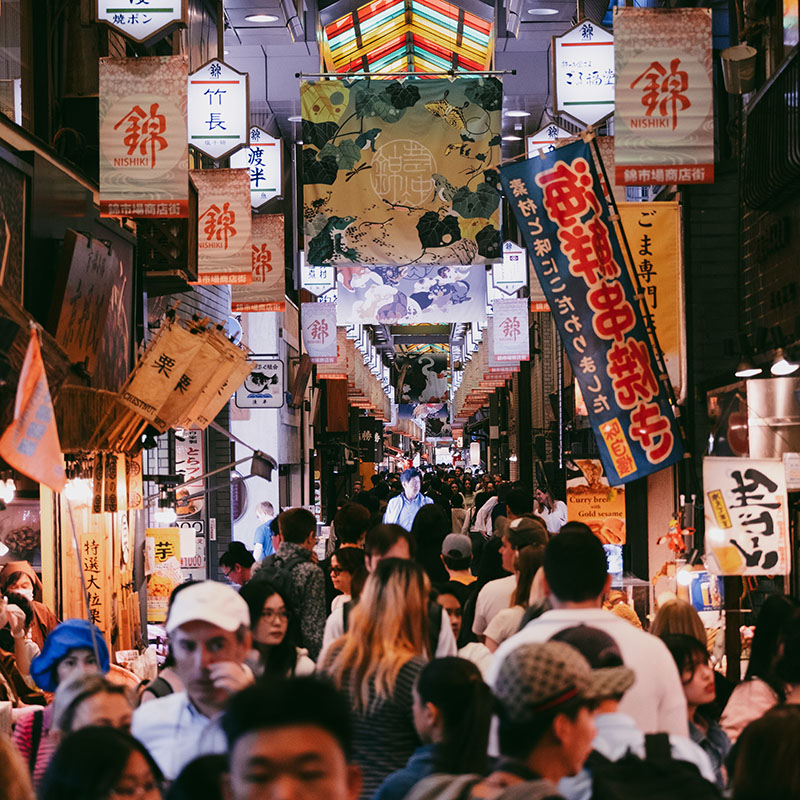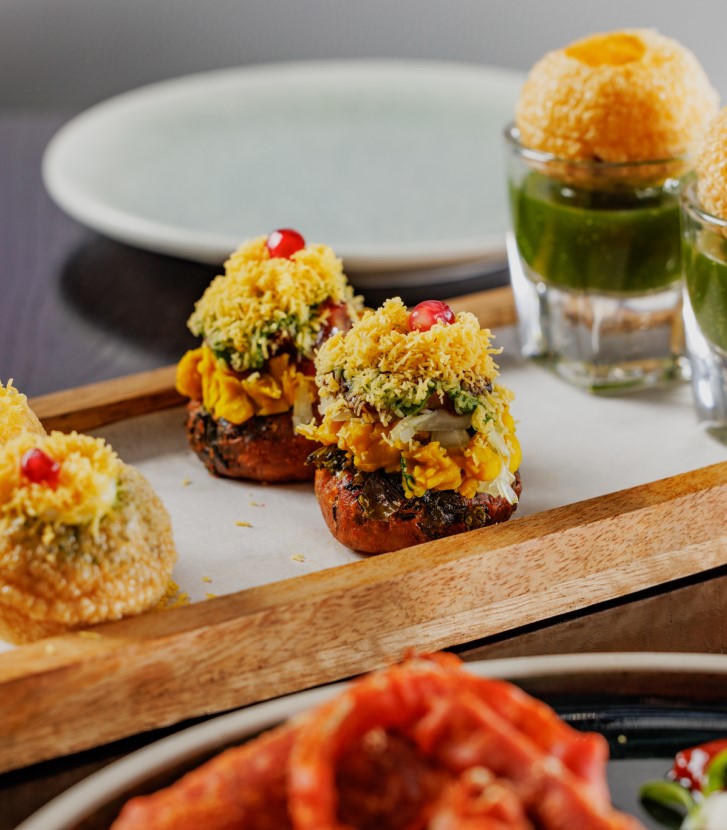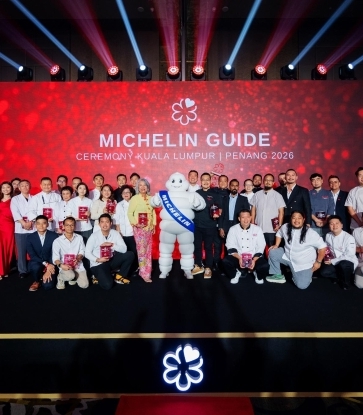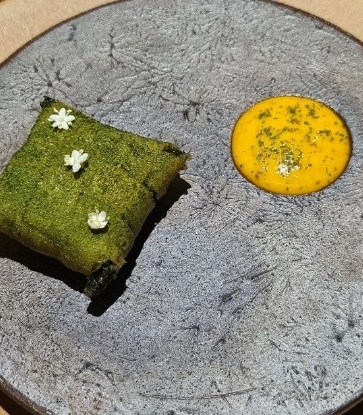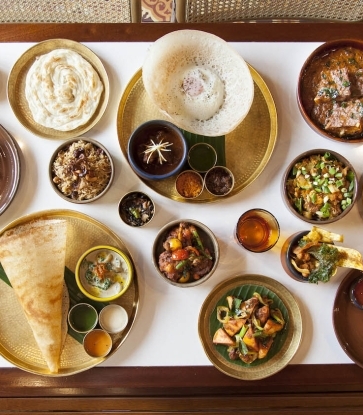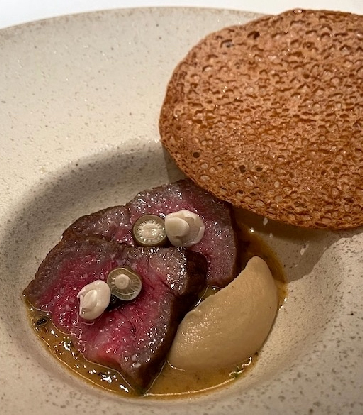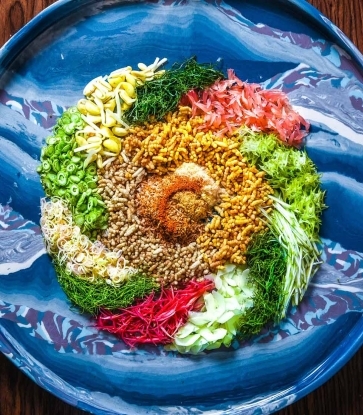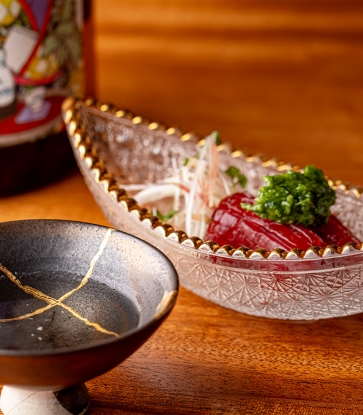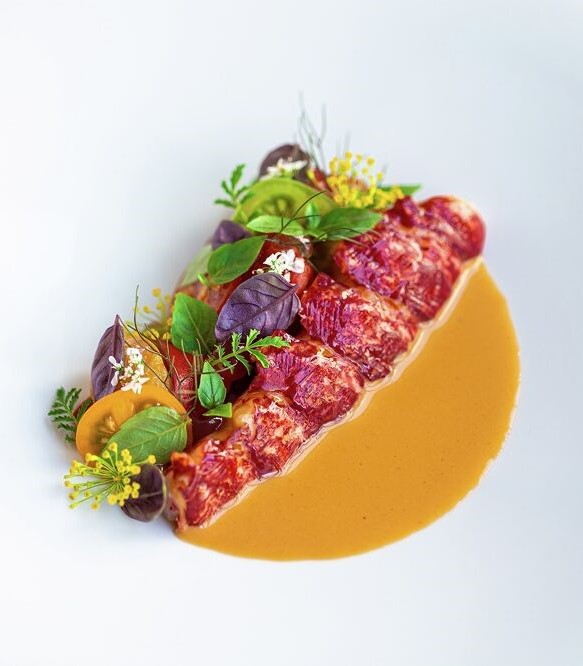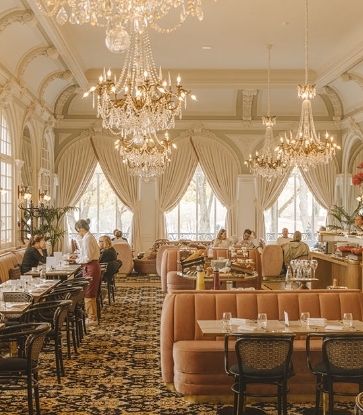In the MICHELIN Guide Kyoto Osaka 2025 guide, inspectors highlight the dishes that best express this evolution — not the postcard classics, but the plates that linger in memory: unexpected, precise, and with an unmistakable sense of place.
1. Nigirizushi of Medium-Fatty Tuna
Kikunoi Sushi Ao, One MICHELIN Star
At Kikunoi Sushi Ao, a single piece of chutoro nigiri (medium-fatty tuna) speaks volumes. The fish arrives gently scored with near-invisible knife cuts, a quiet act of craftsmanship that coaxes out its silken texture and deep, marine umami. It’s a gesture not meant to dazzle, but to heighten — allowing the tuna to unfold, unhurried, on the tongue.
This reverence for subtlety runs throughout the experience. The nigiri is served on a ceramic plate by Kitaoji Rosanjin, the 20th-century artist and epicure who famously declared, “utensils are the clothing that make cuisine.” Here, every element — from the precise blade work to the plate’s quiet authority — reflects a Kyoto sensibility: measured, thoughtful, and profoundly attuned to detail.

2. Big Conger Eel and Prosciutto
shiro, One MICHELIN Star
At Shiro, the gnocco fritto with conger eel is a striking reinterpretation of the traditional Italian fried bread, infused with Japanese coastal flair. Thick slices of conger eel are briefly dipped in hot oil, searing the surface to lock in their rich, briny flavor. They’re then draped in paper-thin slices of dry-cured prosciutto, allowing the residual heat of the eel to gently melt the ham’s fat and create a luxurious fusion of textures and tastes. This dish exemplifies Shiro’s signature approach of melding bold Shimane ingredients with refined Italian techniques, crafting a culinary dialogue that bridges cultures and traditions in every bite. In a city where tradition is often codified, shiro reimagines it entirely – and convincingly so.

3. Snow Crab Dumplings in Celery and Lemongrass Tea
Jean-Georges at The Shinmonzen, One MICHELIN Star
The snow crab dumplings in celery and lemongrass tea at Jean-Georges at The Shinmonzen is a standout dish that bridges culinary traditions from France and Japan with finesse.
Wrapped in a tender, delicate shell, the snow crab’s natural sweetness melds beautifully with the tart, herbal notes of celery and lemongrass, creating a harmonious bouillon that’s both comforting and refined. Uniquely, the restaurant, which is known for its contemporary French cuisine, adopts the term ‘dumplings’ (gyoza) rather than ‘ravioli’, a nod to Asian influences. This dish encapsulates the restaurant’s philosophy of cross-cultural dialogue, where French technique meets Japanese ingredients in a delicate, thoughtfully crafted plate.

4. Grilled Wagyu
Kodaiji Jugyuan, Two MICHELIN Stars
The grilled Wagyu at Kodaiji Jugyuan is perfectly seared and paired with the umami-rich complexity of Daitokuji natto and the briny bite of black olives. Generous chestnut shavings add a touch of seasonal elegance.
Served on plates crafted by contemporary artists, this dish exemplifies Kodaiji Jugyuan’s vision ofpushing the boundaries of Japanese cuisine into exciting new territory.

5. Tofu Skin Soup
Miyawaki, One MICHELIN Star
At Miyawaki, the tofu skin soup is an haute blend of textures and flavors, served in an antique Western-style cocktail glass. This velvety purée combines the creamy smoothness of soy milk with the umami depth of dashi, creating a singularly rich and satisfying taste.
A subtle hint of mango adds delicate acidity, lifting the flavors and creating a gentle interplay of sweetness and umami. This dish embodies Miyawaki’s refined approach, where Japanese ingredients and a touch of global inspiration come together in a distinctive and harmonious dining experience.

Hero image: A quiet moment at Kōdaiji Jugyuan, where centuries-old architecture and Kyoto’s changing light meet in quiet conversation. © Kodaiji Jugyuan
